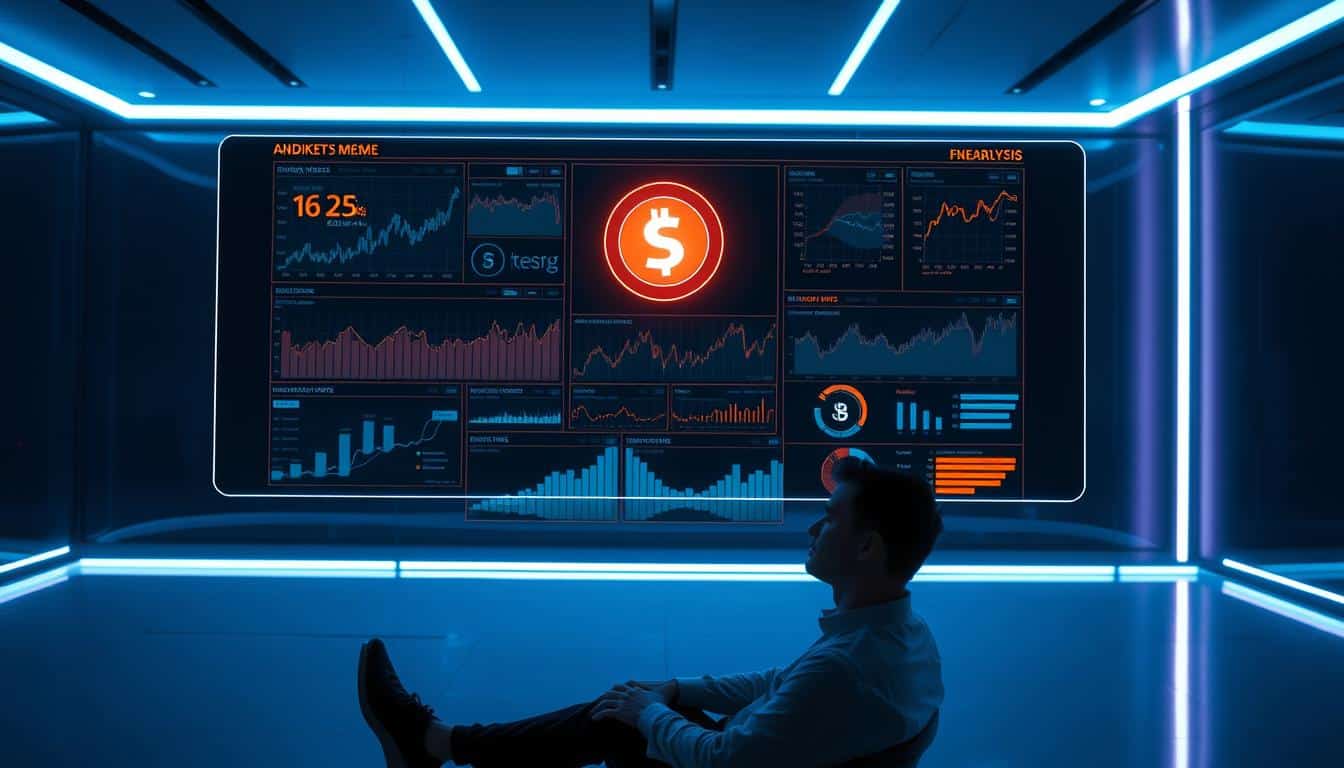
Legal Battle: Attorney Sues to Unveil Bitcoin Creator Satoshi
A groundbreaking lawsuit against US authorities seeks to unveil crypto’s greatest mystery: Who is Satoshi Nakamoto? Follow a bold crypto attorney’s legal battle using FOIA requests to force government agencies to reveal Bitcoin’s creator, despite potential market volatility and privacy

North Korea’s $3B Crypto Heist: How Hackers Fund Pyongyang
Discover how North Korean hackers have amassed a staggering $3 billion in cryptocurrency through sophisticated heists, funding weapons programs and evading sanctions. Learn about the regime’s evolution from basic cyber espionage to becoming the world’s most prolific digital thieves, and

Crypto Rally Crashes: Trump’s Tariff Plans Spook Investors
Trump’s crypto rally fizzles as his aggressive tariff policies spook investors and trigger a market selloff. After an initial surge where Bitcoin approached $80,000, crypto markets reversed course as economic concerns overshadowed regulatory optimism, highlighting how macroeconomic factors continue to

Wall Street Faces Existential Threat as Bitcoin Reshapes Finance
Wall Street faces an existential threat as Bitcoin and cryptocurrencies transform global finance. Once skeptical institutions now scramble to adapt as digital assets reshape investment strategies, payment systems, and wealth management. With Bitcoin ETFs gaining approval and institutional adoption accelerating,

US Crypto Stocks Tumble as Bitcoin Hits Record 2025 Low
Amid Bitcoin’s plunge to a 2025 low, major U.S. crypto stocks like Coinbase and MicroStrategy face steep declines. Market volatility has intensified with a 22% trading volume increase as investors react to falling prices. Factors driving the downturn include faded
Authority in Crypto Presales and News
Cryptsy: Your #1 Source for Crypto Presales, Altcoins & Bitcoin Price Updates
Cryptsy is your go-to for the latest in cryptocurrency presales, altcoin launches, and Bitcoin price updates. Get real-time updates, expert analysis, and the latest trends in digital assets. Whether you’re following new projects or keeping an eye on Bitcoin, Cryptsy has you covered.
Led by crypto expert Ethan Blackburn, Cryptsy is a trusted name in blockchain. Ethan’s market knowledge and commitment to accuracy give you the best insights. His leadership keeps Cryptsy ahead in the fast-changing crypto world.
Track the current Bitcoin price and Ethereum updates, and find early-stage crypto gems. Cryptsy offers powerful tools and expert content to help you succeed. Join the community of savvy investors who trust Cryptsy for crypto presales, altcoins, and the Bitcoin market.
Latest Crypto News

Legal Battle: Attorney Sues to Unveil Bitcoin Creator Satoshi
A groundbreaking lawsuit against US authorities seeks to unveil crypto’s

North Korea’s $3B Crypto Heist: How Hackers Fund Pyongyang
Discover how North Korean hackers have amassed a staggering $3

Crypto Rally Crashes: Trump’s Tariff Plans Spook Investors
Trump’s crypto rally fizzles as his aggressive tariff policies spook

Wall Street Faces Existential Threat as Bitcoin Reshapes Finance
Wall Street faces an existential threat as Bitcoin and cryptocurrencies
Why Cryptsy Stands Out in the World of Crypto Presales
Real-Time Updates: Cryptsy gives you the latest news, presale alerts, and live Bitcoin price updates. This keeps you ahead in the fast world of crypto investments.
All-in-One Crypto Hub: Cryptsy covers everything from Bitcoin and Ethereum prices to deep analysis of crypto presales, ICOs, and token launches. It’s perfect for both Bitcoin fans and altcoin seekers.
Seamless User Experience: Cryptsy is easy for beginners and pros alike. It offers a smooth platform for exploring crypto presales, trends, and expert insights all in one spot.
How Cryptsy Helps You Dominate Crypto Presales
Whether you’re new to crypto or a seasoned investor, Cryptsy gives you the tools and knowledge to succeed. Here’s how we help you win:
Make Smarter Investments: Use real-time data, trend analysis, and the latest Bitcoin price updates to find the best crypto presales and boost your returns.
Stay One Step Ahead: Get early access to insider insights on upcoming token sales and hidden gem projects—before they become popular.
Level Up Your Crypto IQ: Explore expert content and analysis to master the world of crypto presales, blockchain trends, and digital finance.
FAQ
Cryptsy is a leading platform for cryptocurrency news, providing the latest insights, trends, and developments in the digital asset world.
Cryptsy provides the most current information, suggesting frequent updates to keep readers informed in the fast-paced world of digital finance.
Cryptsy provides the most current information, suggesting frequent updates to keep readers informed in the fast-paced world of digital finance.
Yes, Cryptsy is designed to keep all readers informed, regardless of their experience level in the cryptocurrency world.
Cryptsy is led by Ethan Blackburn, whose expertise and commitment to delivering cutting-edge news make it a beacon of authority in the cryptocurrency news space.
Yes, Cryptsy provides insights and trends, suggesting analytical content alongside news updates.
| # | Name | Price | Market Cap | Change | Price Graph (24h) | ||||||||||||||||||||||||||||||||||||||||||||||||||
|---|---|---|---|---|---|---|---|---|---|---|---|---|---|---|---|---|---|---|---|---|---|---|---|---|---|---|---|---|---|---|---|---|---|---|---|---|---|---|---|---|---|---|---|---|---|---|---|---|---|---|---|---|---|---|---|
-

BTC Bull Token (BTCBULL)
$0.0400
-

Aureal One (DLUME)
$0.0015
-
DexBoss (DEXB)
$0.055
-
ShepskyAI (SHAI)
$0.0025
-
Solaxy (SOLX)
$0.001800
-
GameX Token (GMXT)
$0.010
-
Mind of Pepe (MIND)
$0.0040
-
Meme Index (MEMEX)
$0.0350
-
SkyVault (SVT)
$0.0080
-
CryptoUnity (CUTY)
$0.0070

Hiding Meme Price Prediction 2025-2030: Market Analysis
Meme coins have made waves in the crypto world. They’ve generated over $40 billion in

XRP Price Outlook 2025-2030 Amid SEC Appeal Battle
XRP’s recent 600% volatility spike shocked investors. This surge happened during regulatory challenges, hinting at








 Bitcoin
Bitcoin  Ethereum
Ethereum  Tether
Tether  XRP
XRP  USDC
USDC  Solana
Solana  Dogecoin
Dogecoin  TRON
TRON  Cardano
Cardano  Lido Staked Ether
Lido Staked Ether  Wrapped Bitcoin
Wrapped Bitcoin  LEO Token
LEO Token  USDS
USDS  Toncoin
Toncoin  Chainlink
Chainlink  Stellar
Stellar  Avalanche
Avalanche  Wrapped stETH
Wrapped stETH  Hedera
Hedera  Sui
Sui  Shiba Inu
Shiba Inu  MANTRA
MANTRA  Bitcoin Cash
Bitcoin Cash  Polkadot
Polkadot  Litecoin
Litecoin  Binance Bridged USDT (BNB Smart Chain)
Binance Bridged USDT (BNB Smart Chain)  Ethena USDe
Ethena USDe  Bitget Token
Bitget Token  WETH
WETH  WhiteBIT Coin
WhiteBIT Coin  Hyperliquid
Hyperliquid  Pi Network
Pi Network  Monero
Monero  Wrapped eETH
Wrapped eETH  Dai
Dai  OKB
OKB  Uniswap
Uniswap  sUSDS
sUSDS  Aptos
Aptos  Gate
Gate  Pepe
Pepe  Coinbase Wrapped BTC
Coinbase Wrapped BTC  NEAR Protocol
NEAR Protocol  Tokenize Xchange
Tokenize Xchange  Ondo
Ondo  Mantle
Mantle  Cronos
Cronos  Internet Computer
Internet Computer  Ethena Staked USDe
Ethena Staked USDe